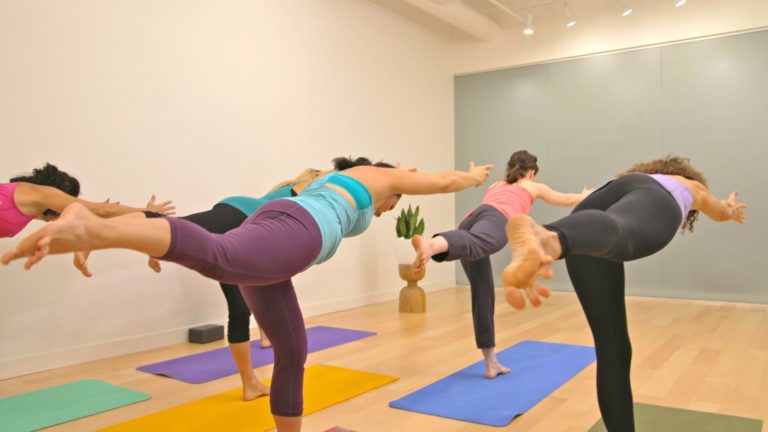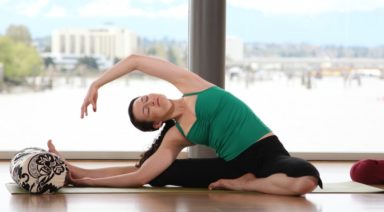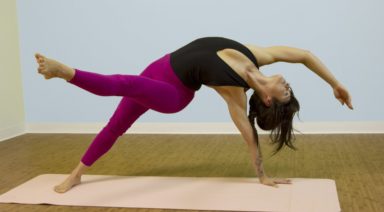You Are Beautiful: 3 Ways to Release Self-Judgment

What if you woke up one morning and decided to stop judging yourself? Rather than looking in the mirror and thinking ” a face only a mother could love,” you might say ‘hi beautiful.” When you dress for the day, you might pick clothes that make you feel like a superstar instead of clothes that hide your body. You might choose to melt some sinfully delicious dark chocolate into your oatmeal and add a pinch of cinnamon rather than stuffing down the same old boring ‘weight loss’ breakfast. Maybe you will smile at other drivers on the way to work, rather than swearing or sharing a few choice non-yogic mudras. (Yoga mudras are hand positions that allow the flow of energy to travel in specific ways around the body, such as in the prayer or Anjali mudra with palms together at your heart center).
What if you moved your yoga mat to the front of the class rather than hiding in the back corner unseen? Perhaps you could compliment yourself on your ability to hold Warrior III a little longer than normal today, rather than comparing your balancing skills to other yogis in class. Maybe you could even say “thank you” to yourself for attending yoga today while enjoying a few blissful moments in savasana or corpse pose.
The things that we say to ourselves, and the ways in which we treat ourselves, are of utmost importance. We hear and believe our own thoughts and act upon them. When we judge ourselves, we are giving others permission to do the same. When we treat ourselves with love, it is only natural that we will treat others with love, too. And magically, according to the Law of Attraction, others will respond and treat us with love in return.
Below, find a short list of ways that may help you to release self-judgment, and love yourself more.
1. Surround Yourself in a Blanket of Love. This may sound a little bizarre, but love really does come from within. Sit or lie quietly, relaxing or meditating, and allow your mind and heart to imagine that you are totally engulfed in a soft, cozy, warm blanket. The blanket fills you with love and at the same time, allows all things that are not love within or around you to be released with ease.
2. Wear a Blue Topaz Crystal. You might decide to wear a ring or a necklace with a pendant, or carry the gemstone around in your pocket during the day. Blue topaz is the color of the throat chakra, the area that allows us to communicate our truth to the world. Begin by communicating positive and loving truth to you.
3. Catch and Correct Yourself. When you hear yourself judging yourself or others, or thinking negative thoughts, catch yourself and turn the statements around. Think to yourself: I am beautiful. I am loved. I am confident. I am.
The Science of Suffering: Understanding the 5 Kleshas and What They Really Mean

For most of us, life is pretty simple when we’re born. Our needs are met. Our concerns are only essential. Our world is new, beautiful, and engaging. And, most importantly, we are connected to the source of the universe, enjoying a direct line to love. In the profound teachings in A Course in Miracles, one of the most foundational beliefs is that when you are connected to this source your life is good, miraculous in fact. But, when separated from it, life is painful and complicated; you are overwhelmed with the feeling of being lost.
In Patanjali’s Yoga Sutras, another equally profound book of wisdom, the concept of being separated from the universal source of love is broken down into five identifiable roots of suffering. Known as the kleshas, these roots are what keep us away from love and, therefore, are what cause us to suffer.
By understanding the science of suffering by digging into these kleshas, you can begin to become aware of what is keeping you from enjoying life, what is keeping you from knowing, as the yogis say, your true nature.





































